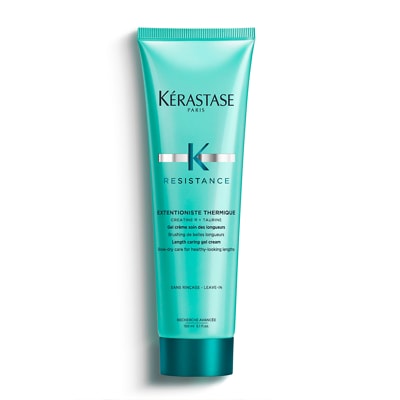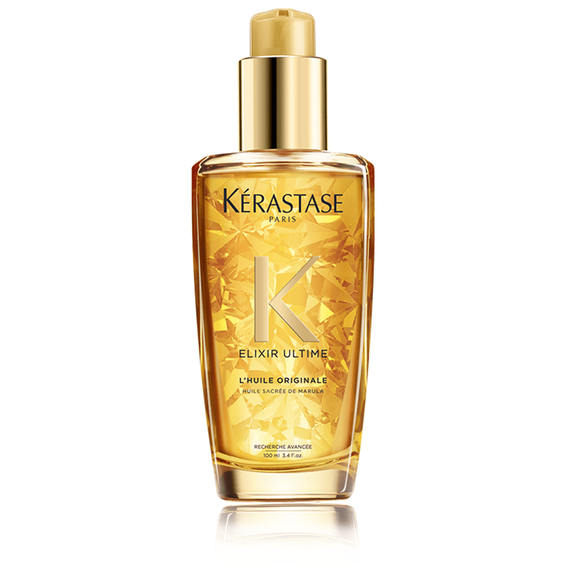HAIR TRENDS FOR 2023
So 2023 is here, what is the look for you this year?
Getting ahead of the game never hurts anyone, and what better way to occupy the gloomier months at the start of the year than by planning this year's hairstyle.
With 2022 being one of our most experimental hair fashion years ever thanks to us all being locked up the year before, we are hoping this year will bring just as much fun and edge.
At Avalon salon Crouch End, we saw a huge influence from the 90's, with the big blowdrys and mixie cuts (a mix between a mullet and a pixie cut), bleach blonde and redhead but where can we go in 2023?
Getting the colour and style right can take time so let's get started now.
The general look is still leaning towards a certain effortlessness when it comes to our hair, whether it be through a hair-colouring technique like balayage that grows out beautifully in between appointments or the perfect haircut that suits our face shape with minimal styling. Ask our experienced colourist in our Crouch End salon for a personalised consultation.
Let’s get started on colour.
THE CANDLELIT BRUNETTE
Candlelit brunette has a brunette base colour featuring golden highlights. This is a low maintenance, reverse balayage with golden tones. Beautiful and natural while keeping the face frame, light but warm.
COPPER REDS
All shades of red are spilling over from last year and will be popular in 2023, ranging from fiery reds and deep burgundy to warm auburn. Great for you dark haired girls who aren’t ready to go too light. Fiery red is the look for you.
Now where do we go with the cut? Well let's start with the C Cut.
THE C CUT
Believe it or not the Rachel haircut is having a revival in 2023 and if you’re a TikTok fan then you may know this as the Unicorn Cut. Please don’t try this at home!!!
The salon name for it is the “C cut” and it is much softer and not as heavy on the face framing as the Rachel cut, giving a more rounded, balanced haircut which is still low maintenance and easy to style.
Also trending high is the French Girl Style.
THE FRENCH GIRL STYLE
If shortcuts are your thing then this is your year! We will be seeing, pixie’s, bobs, fringes and variations of all three. With bobs getting squarer and shorter, the French girl style is the look that is trending this year. With its cheekbone skimming style, you can’t get much chicer than this.
If styling is your thing then get that pintail comb out and try the Barbie Ponytail or the Givenchy Pouf.
THE BARBIE PONYTAIL
Well with the Barbie movie heading our way this spring the high sleek ponytail is trending as the retro girl look continues. This sleek pony is a polished look that can be worn at the office and formal events.
THE GIVENCHY POUF
Another sleek look for this year is the Givenchy red carpet Pouf. I personally love this look as it is such low maintenance and easy to throw back when time isn’t on your side.
This post was written by Debbie at Avalon Hairsalon, Crouch End, North London .
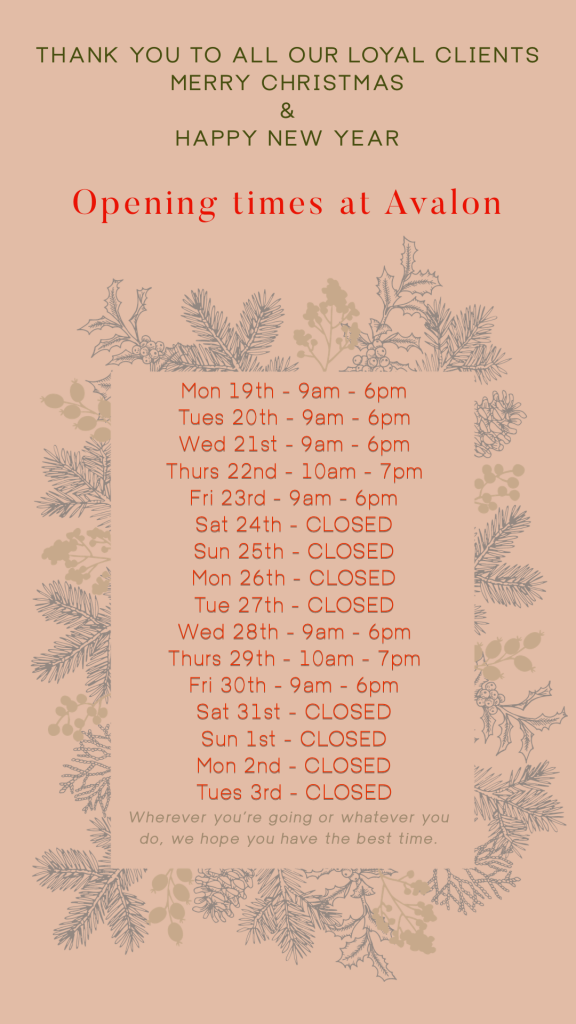
I'd like to thank all our amazing clients for your loyal custom throughout the year it is very much appreciated.
Please all have a safe and
Happy Christmas.
Avalon Team X
For the love of hair!!!
So it has finally arrived! Botox for hair!!
"WHAT?" I hear you shout.
I know, I know, what next?
Well, let me tell you a bit about this treatment before you make your decision.
pHrizzy-o-therapy (love that name) was originally created by hairdressers. One of the main questions we get asked is “how do I get rid of frizz”. Our answers vary obviously depending on what type of hair we are dealing with. So let's go through what we as hairdressers suggest for the various types of frizz.
NATURAL FRIZZY/UNRULY HAIR
Say ‘good-bye’ to frizz’!
If you want to keep your curly or wavy locks but want to lose the frizz, then we have the treatment for you. At Avalon Crouch End our stylist have spent many hours researching the best treatment to remove the frizz from curly hair and the Keratine treatment is the best. I must say even though I was glad to see the formaldehyde being removed from all keratin treatments, we struggled to find a product that gave us the same results. After much research and many models later we eventually came across Keratin Revolution Nano Intense Treatment. This is great for smoothing the hair without losing its texture. The Keratin Revolution system allows for complete versatility of style - so you can create a super sleek and straight style or you can go for a more volumised bouncy blow-dry finish - maybe even curls. Ask your stylist at Crouch End Avalon for more details.
Time - 3 hours
Price - Starts at £150
Last up-to 3 months
FRIZZ FROM DAMAGE
While frizz hair is just a part of some people’s DNA, damaged frizz typically affects those who repeatedly use heat styling equipment and have harmful grooming habits. This can cause breakage, tangling, and split ends — making your hair look dry, dull, and frizzy.
At a microscopic level, frizzy and damaged hair has undergone excessive weathering that’s worn down the outermost layers of your hair shaft, known as the cuticle. Once this is removed, the inner cortex layer is exposed, which can lead to hair breakage. In other words, having frizzy tresses is a sign of significant hair damage that has compromised the structure of your hair strands and stripped its hydration away.
So this is where our 72 Hair pHrizzy-o-therapy Treatment comes in.
pHrizzy-o-therapy is the latest innovation in the care of frizzy, unruly, unmanageable hair that can last-up to 12 weeks per application. Formulated with plant extracts, organic amino acids and keratin, this therapy repairs all hair types, adding strength and elasticity to your hair.
Benefits:
* Restores your hair’s pH balance using key organic and amino acid components, making it soft, frizz-free and luxurious.
* Eliminates frizz and strengthens your hair.
* Hair feels weightless and easy to manage.
* Optimises shine
* Suitable for all hair types
* Quick and easy process
* You can wash your hair the same day
* 80% Organic ingredient
Written by Debbie Newman Owner of Avalon Hair Studios Ltd
IS YOUR HAIR SUMMER READY?
So summer is here with a bang! I’m sure your wardrobe is ready but is your hair summer ready? It’s time to start thinking about how you can make your hair look its best! Here are a few things you may want to consider before shooting off on your hols.
Be rid of those split ends -
There’s nothing worse than the sun shining its beautiful rays on those dry, damaged ends so let's get a haircut. It’s a great way to feel clean and fresh.
If however you have spent the winter trying your hardest to grow your hair then our stylist at Avalon North London understands a technique called hair dusting. Hair dusting maintains the length of your hair while removing flyaway split ends. It's a way to keep your hair looking healthy while you're trying to grow it out. It can also smooth out hair that's developed a life (and split ends) of its own.
If you would like to know more about split ends then check out our blog on:-
Throw some light on those locks! -
Get a new hair colour this summer to stay up to date with the latest trends and to brighten up your look. Your Avalon stylist can recommend colours and processes that will suit you and make your hairstyle look amazing but remember to take extra care during the summer. You may find that hair when is overexposure to the sun can lead to colour fading and very dry hair! Swimming pools, sea water, more washing and styling than usual during the summer holidays can also cause a lot more damage so change up your care products, for something with a little more moisture.
This MOMO Moisture Boost Trio floods thirsty locks with nourishment to restore hydration and enhance softness on even the most dry and dehydrated hair. From the first use, you'll notice a difference in manageability and hair will feel in tip top condition.
Beachy styles -
Effortless and elegant works well for summer months, so get practising with some cute hairstyles that work for you. Soft waves and beachy braids are big this season. Sea Salt spray is a great product to help you create those beachy waves. All you have to do is spray on wet or dry hair and watch those waves come to life, beachtastic!!!
Hand luggage products -
MOMO shampoo bar - If like most hand luggage is your choice we all know the biggest challenge is the limited liquid size products that we are allowed. Well here’s a great way to get around it.
Davines moisturising solid shampoo for dry or dehydrated hair. A solid texture, for a high performance, that delights from the first application thanks to a rich creamy foam delivering softness, shine and silky texture.
Not only will you be saving the planet with this eco-friendly brand but you’ll be saving yourself a lot of time and embarrassment in the airport when they confiscate your huge bottle of shampoo that you tried to sneak through.
If shampoo bars are just one step too far for you then pop into Avalon Crouch End and you’ll see our full range of travel size products perfect to throw into your case or carry on.
Accessorise-
Summer is the season for fun and flirty accessories, from feathers, and fancy clips to colourful scarves, there's something to suit everyone.
Invest in a hat, not only will it set off your summer look, and make you stand out from the crowd as a fashionista, but it will protect your hair and face from the sun. Plus, it's a great option to have a handy hat on bad hair days!
Written by Debbie Avalon.
Plastics in our Oceans

Did you know over 16 billion pounds of plastic leak into our ocean waters yearly?
With the world’s population increasing, this number is only projected to increase. Plastic in our oceans is something to be concerned about not only because of its detrimental effects on animal life and vital ecosystems but also on our health.
Divines is proud to partner with Plastic Bank to stop ocean bound plastic and improve lives.
Through their partnerships, they will prevent 100 tonnes of plastic from entering the ocean each year. Empower collectors in coastal communities in Indonesia, the Philippines and Brazil.
Products with No Animal-Tested or Animal-Derived Ingredients
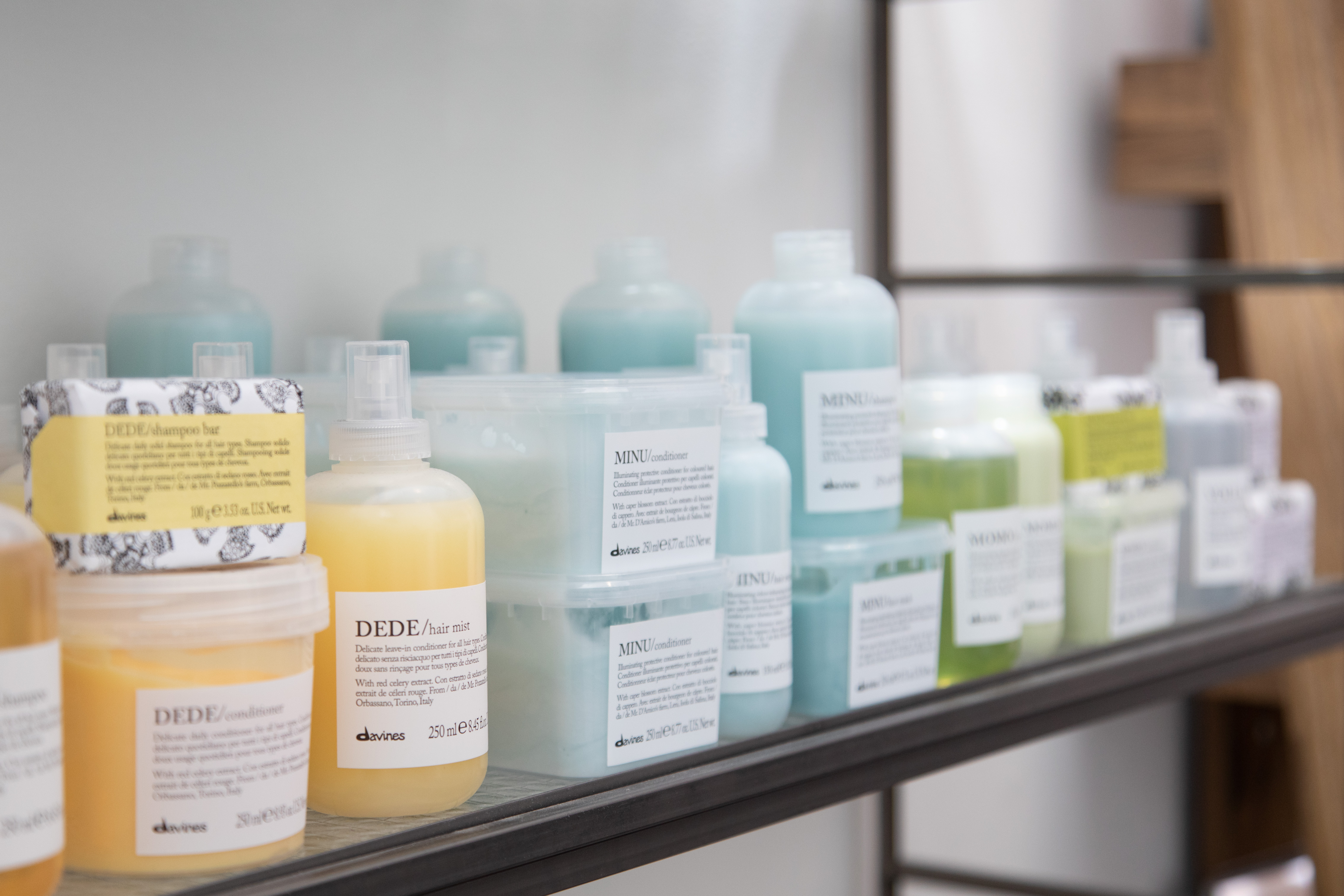
Over 100 million animals a year die from animal testing and millions more are captured and caged for the sole purpose of animal testing. Not only is this cruel to animals, but this could also pose sustainability concerns in areas of the world where animals are captured. Disrupting the balance of nature in the name of animal testing is both risky and more expensive than non-animal testing. It is best to choose products that do not support animal testing. Davines Group is committed to producing only the highest quality products which meet our uncompromising efficacy and ethical standards. They do not test their products on animals, nor do they ask others to test either their products or ingredients on animals. Animal testing does not align with their values.
Supporting cruelty-free products not only will make you feel better knowing no animals were harmed in the making of your products, but you will be one step closer to helping us become an eco-friendly salon.
Energy-Saving Practices
We have started to use energy-saving components in our salon to conserve electricity and water. For example, using energy-efficient lighting like the GE Energy Smart Energy light bulbs.
We have fitted a programmable thermostat in the salon and set it to a comfortable temperature to help reduce our energy consumption.
We have installed water saving taps to help conserve the amount of water used.
We at Avalon salon Crouch End are working towards building a sustainable salon. We want to inspire and enable as many people as possible to live more sustainably.
|
What is a toner?
Admittedly, the term can be confusing. That’s because many hairdressers use the word interchangeably with other terms like hair glossing and fading.
Essentially, a toner is a hair colour product that contains low or no ammonia, that gently alters the undertone of the hair but let me break it down for you so that you understand what they do and why they are so important.
When lighting, we lift the hair to what we call "RAW" lift. It’s a raw cuticle that is open and if it’s not closed and the pH of the hair isn’t balanced, it can create damage and split ends over time. Lightener leaves the hair yellow, a little orange and sometimes white. And even if you love the colour it is, it needs to be toned to close the cuticle.
A consultation is a guided interview that should help you both get to the best understanding of what you would like, and what is attainable. Our colour experts at Avalon hair salon, Crouch End will take time to talk in depth about your hair history. So when you talk to one of our colourist, honesty is truly the best policy. We work with a variety of chemicals that create different reactions. Sometimes these chemicals have adverse reactions when mixed, and the only way your colourist will know if they are present is for you to tell them. The simplest way to talk about your “Hair History” is to work backward in months. Hair grows on average half an inch per month. If your hair is 6 inches long, the ends are 1 year old. If it 12 inches long it is 2 years old. Everything that you do and live through exists in that hair. If you went blonde last year but put a box on it to go back to your natural, the blonde is still there, just hidden. If you used any sort of box or shampoo that altered your colour enough for you see “roots” growing out, it is chemically affected, and you must tell your colourist everything that has affected your hair. This is where your toner comes in to play.
 Toners are designed to either enhance warmth or neutralise, subdue excessive warmth or simply to sprinkle some absolute magic onto your hair to create something absolutely beautiful.
Toners are what we as hairdresser mostly call a “semi” permanent colour meaning they fade from shampooing and once they are gone the hair is back to its Raw state.
Toner formulas can be changed tweaked to suit changing needs and trends and a great way to keep your hair shiny and fresh without having to foil work every time.
Toner will not lift your hair to make it lighter but they can certainly make a big impact when the correct formula is chosen.
Why not pop in to Avalon Crouch End Hair Salon and ask one of our colourist for advice. This article was written by the Salon Manager Michelle at Avalon. |
|
Does your hair constantly feel stiff, dry?
If you answered “yes” to one or more of these questions, it’s a sure thing you’ve got hard water.
Hard water can really mess with your hair texture and colour, making it very hard to style and leaving you with no shine.

How to repair damage to the hair caused by hard water.
There are special shampoos called chelating shampoos. These particular clarifying shampoos bind to the minerals and strip them out of your hair.
I would recommend one of our sustainable products called Davines Solu Clariftying Shampoo. This deep cleansing shampoo has an innovative formula that effectively removes residues from hard water and styling products. It will not damage or strip the hair of essential nutrients thanks to it's natural active ingredients which deeply cleanse and instantly moisturize.

Why not pop in to Avalon Crouch End Hair Salon and ask one of our stylist for advice.
This article was written by the Salon Manager Michelle at Avalon.
CAN YOU GO BLONDE WITHOUT DAMAGING YOUR HAIR?
Ok, so the first question you need to ask yourself is, "Is my hair healthy enough to go blonde?"
Well, you need to ask yourself the following questions before you can answer this:-
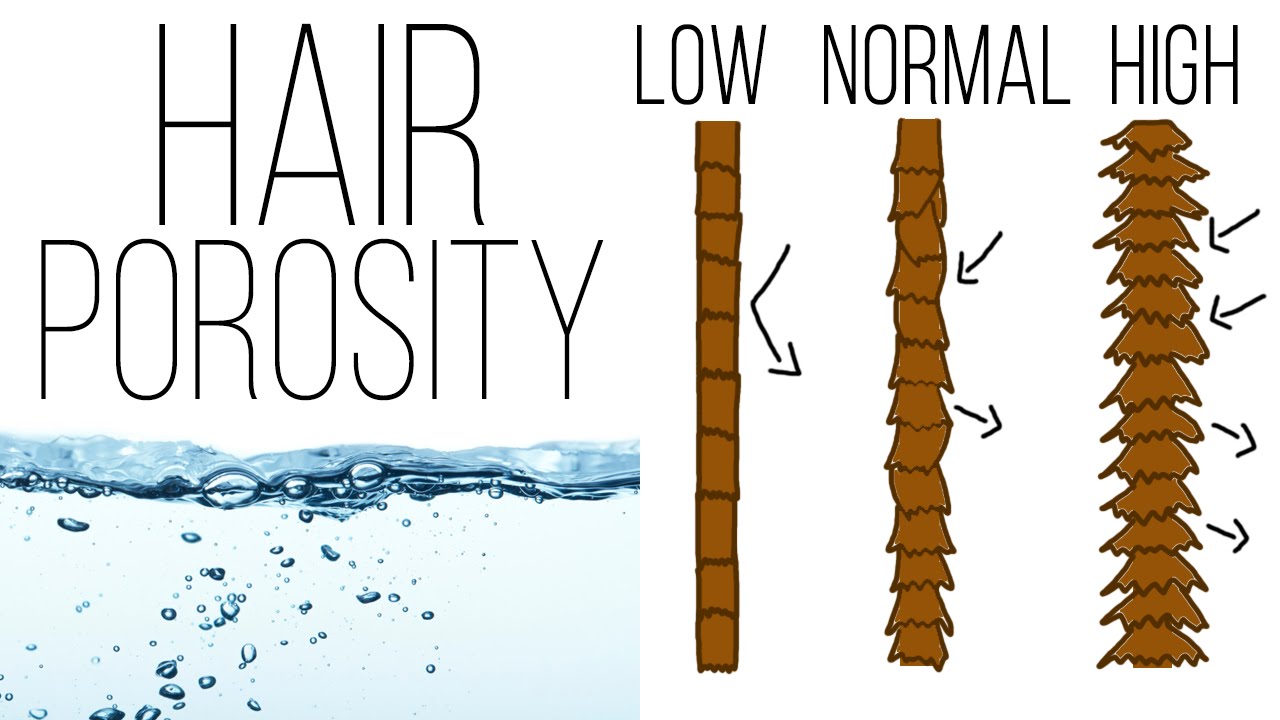
Does your hair have split ends?
Is it rough to touch?
Does your hair break off when you brush it?
If yes to any of these questions then your hair is porous and it should not be coloured.
If you're still not sure, why not do a strand test:-
While your hair is wet, take a strand and gently pull it. You can use a strand that has fallen out already if you prefer. If it snaps easily then this is a sign of it has been over-processed and is not suitable to colour again. Your best option in this situation is to have a good cut to get rid of those split, dehydrated hair. I would also recommend that you grow as much of your tint/bleach out before colouring again. Why not pop into Avalon, and speak to one of our colour experts at our Crouch End hair salon for some advice on what to do for the best.
Also, a really important thing to consider when going from dark to blonde is tint does not lift tint. If you have coloured your hair either dark or blonde, once you have put tint on your hair you can not lift the colour with tint. You can go darker but you can not go lighter. This means that you would have to revert to bleach to achieve a lift in colour.
As you most probably know with bleach you get a lot more lift than you would do with tint but the downside is that bleach is a lot more damaging than tint. Here's why:-
Bleaching involves the oxidisation process, which uses hydrogen peroxide to remove the colour from the hair shaft.
Tint permanent hair dyes use the same oxidisation process that bleaching does, but it doesn’t lift the cuticle and damage the hair to the same degree. Oxidisation lightens the hair slightly while colour is being applied and bonded to the hair shaft. This process not only changes your hair colour, but it allows you to lighten your hair colour.
Ok so you've considered your options but you still feel nervous about going lighter and damaging your hair. Let's go through the safest steps to take:-
1/ DO IT GRADUALLY - At Avalon, we like to use colour safely by coming up with a long term plan with our clients to achieve the results they want with the minimum damage. We pride ourselves in gaining the reputation of being one of the best hair salons in North London. If you don't have the option of coming to Avalon hair salon Crouch End then talk to your colourist and explain your concerns. Mention that you would prefer not to overlap the colour when coming in for a colour touch up and that you would prefer to go lighter slowly and safely. Any good colourist will completely understand and agree with you.
2/ TREAT YOUR HAIR WHILE COLOURING - When lightening your hair the colour breaks down the protein bonds in the hair shaft. Olaplex is a product that any hairdresser would advise you to use when colouring your hair to protect the natural proteins in your hair and makes the whole lightening process safer and less damaging. It helps stick the protein bonds together and therefore protects them and helps the hair stay strong and healthy.

3/ AFTERCARE - This is your part of the long term plan. Investing in a really good shampoo and conditioner. Our Davines Nou Nou range at Avalon is perfect for bleached, permed or relaxed hair. The rich formula gently cleanses treated hair, giving it deep nourishment, hydration and restoring its natural softness. By buying this product you not only take care of yourself but you will also be taking care of the planet with the effort that is put into sustaining the natural resources and environment when producing.
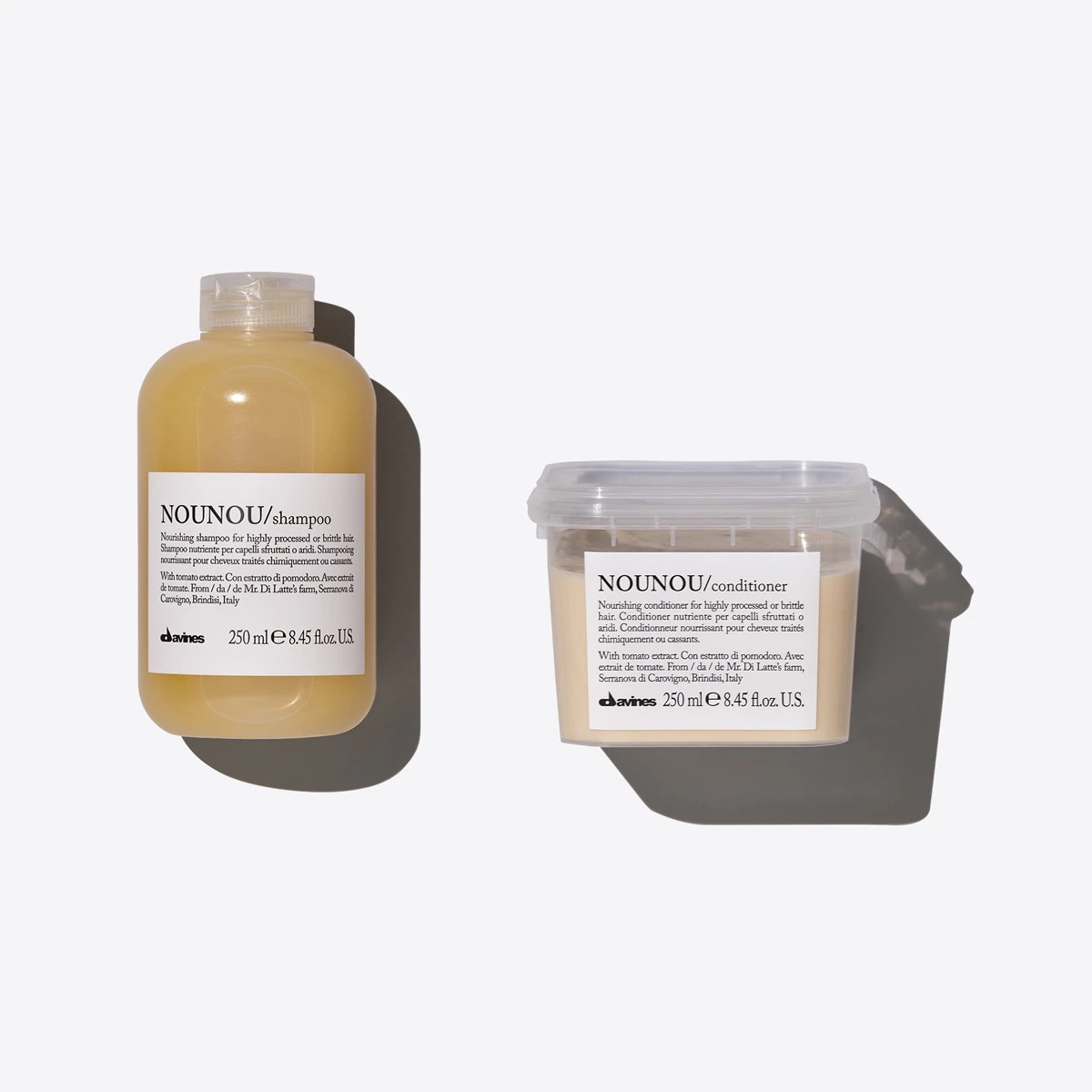
4/ HEAT PROTECTION - This is my go-to product that I use every day. I use it on wet or dry hair. Not only is it a great lightweight, All In One Milk, it's a multi-function leave-in spray treatment that softens, detangles, controls frizz and protects the hair from heat, it also smells amazing!! This is my personal hair perfume!!
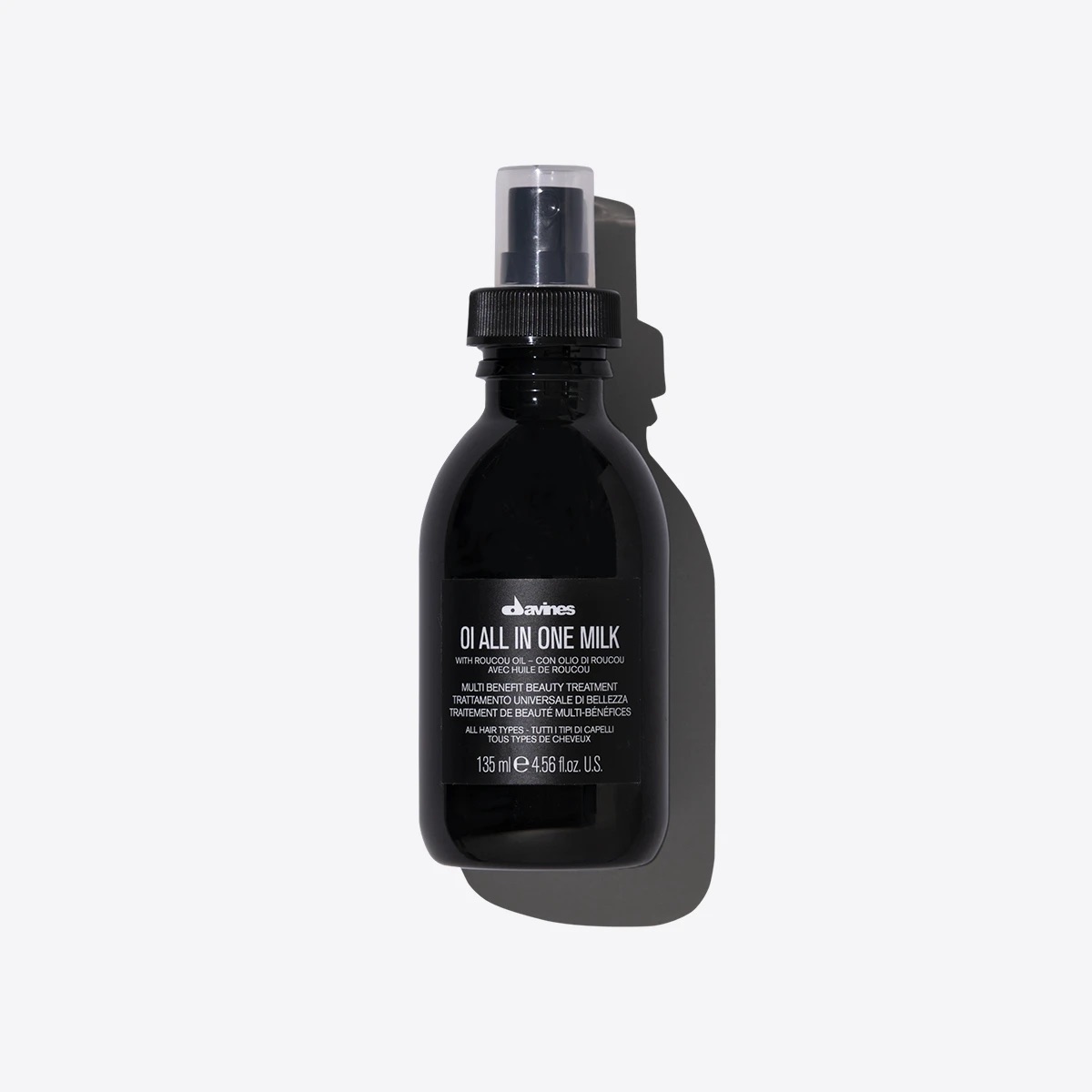
Well, I hope this advice has helped you make a decision on if and how to lighten your hair. Remember shiny healthy hair wins hands down versus dry, dehydrated, limp hair so be sensible and be safe.
This article was written by the Salon Owner Debbie at Avalon.
SPLIT ENDS
So let’s start with what split ends actually are. Basically it is wear and tear. From shampooing to styling, it's dehydrated hair. In technical terms it’s where large areas of the cuticle have split away from the shaft, revealing the inner cortex.
What causes our hair to split?
Well there are a number of reasons.
COLOURING - Colouring changes the structure of your hair. Our colour experts at Avalon Hair Salon Crouch End always recommend you use an Olaplex treatment with your colour so as to reduce the damaging effect of colour.
CHEMICAL TREATMENT - Chemical straightening and perming weakens the hair quite dramatically. Your aftercare is extremely important to make sure your hair doesn't dry out.
HEAT STYLING - Step away from those straighteners ladies! Heat styling also significantly weakens your hair, especially if you’re not using heat protection every single time you style. My recommendation if you have to use heat on your hair is to use Resistance Extentioniste Thermique Hair Protection. It's strengthening hair protector for long hair and split ends which helps to gently restore hair and detangle without causing breakage.
How to get rid of split ends?
Unfortunately there is no way of fixing a split end. You can make them look a little more presentable with finishing products like Kerastase Resistance Serum Therapiste Dual Treatment. This product helps with dehydrated hair and can temporary seal the split ends which makes them visibly smoother.
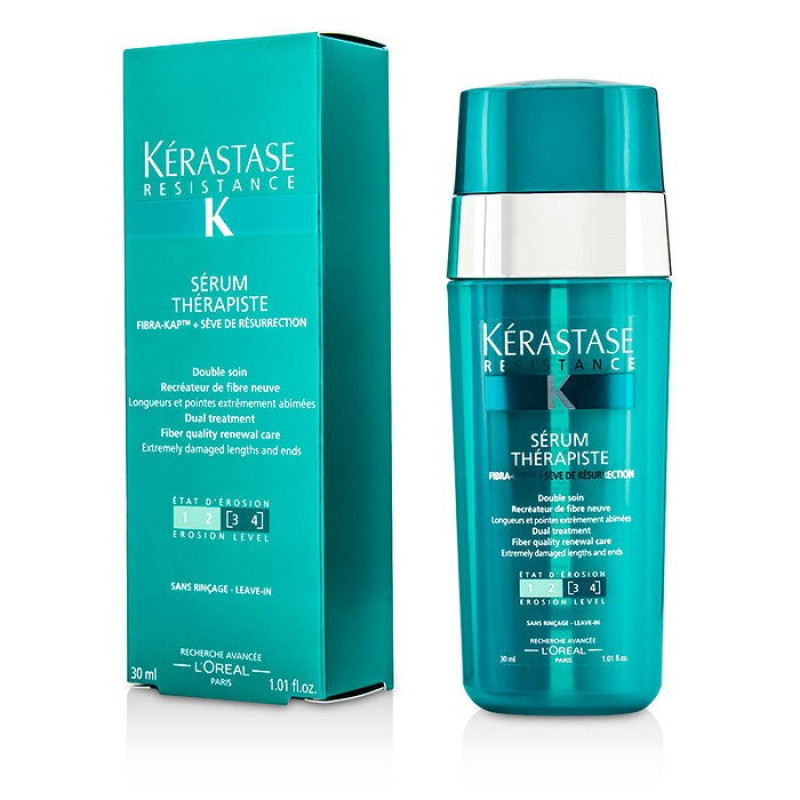
So what can you do about split ends?
Cut them off! Unfortunately this is our only option. Once you have cut them off you can then change what you do that cause the ends to split.
How to prevent split ends happening again?
Get regular haircuts. Our stylists at Avalon Hair Studios Crouch End recommend every six to seven weeks to really stop those pesky ends from splitting.
Don't brush so hard. Maybe try a tangle teaser and start at the bottom and work your way up.
Use a deep conditioning treatment to keep the ends hydrated. You can even comb your hair while the conditioner is still in especially if you do have a tendency to have knotty hair.
Oils! I can not emphasise this enough. Add to your daily routine a little oil to the ends of your hair, it will make a huge difference. I swear by Elixir Ultime L'huile Original, it's saved my poor dried out hair!
Put your hairdryer on a low heat. Over heating can burn and dry the hair out.
Wear a hat on your holidays! UV rays is so damaging for the hair, it can make your hair dry and brittle.
So that's it folks. My advice on split ends. Cut and rehydrate is my two key points!
This article was written by Debbie at Avalon.
Scalp issues are one of the most common causes for unhealthy hair. Here we will address some of the most common problems like itching, dryness, flaking and oiliness.

So here's the thing, we only ever want to fix something once it becomes a problem instead of looking at the root of the problem. It's the same with our hair; if we concentrate on the root then there will be no problem.
What do we really know about our scalp? No it's not just skin. it differs in the fact that it has a high number of lipid and sweat glands and is home to around 100,000 hair follicles. Those lipid and sweat glands combined with the strands of hair means that our scalps can get dirty and sweaty far more easily than other areas of our body. Keeping your scalp healthy and clean is the key to beautiful hair.
So what are major issues when it comes to our scalp:-
1/ ITCHY SCALP
This generally shows that you have a sensitive scalp. It can be due to a number of factors like, pollution or UV rays which can lead to inflammation and itching. It can also be caused by more internal issues like anxiety and stress and it can also be just down to the products you use. Some products you may find way too harsh for your scalp. So I'd maybe start with that one. Why not change your shampoo to a more sensitive formula. At our hair salon in Crouch End we would always recommend Kerastase Specifique Bain Riche Dermo-Calm.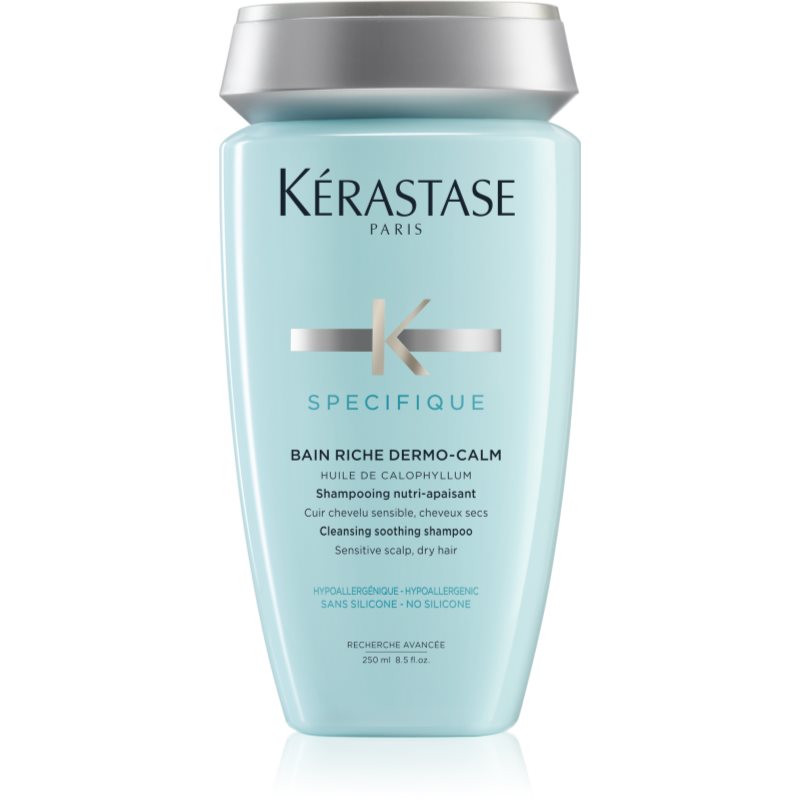
This shampoo cleanses the scalp and helps with any discomfort with dry hair. Infused with Calophyllum Oil and Glycerin with soothing and calming properties, the scalp is gently cleansed, soothed and rehydrated whilst lengths and ends of the hair are nourished. Hair regains lightness and vitality. This is our go to product from our full range of shampoos and conditioners in our back wash bar.
For seriously irritated scalps try Specifique Cure Apaisante, the kit contains a leave-on scalp treatment that you apply three times a week for four weeks. A three-pronged approach, the formula soothes irritation, hydrates and protects the scalp against the environment.

2/ DEHYDRATED OR DRY SCALP
So this is different:-
A dry scalp is usually genetic and generally what you are born with. In some cases it can lead to eczema.
Whereas a dehydrated scalp could be caused by a number or things like stress or just something as simple as central heating. A dry or dehydrated scalp is likely to feel tight and you may experience some unwanted flaking.
So how do you fix these it?
Well the first suggestion is an easy one, water! We should drink at lease eight glasses of water a day to be completely hydrated (that means water, not coffee or wine!)
Lemon juice is also one to try. Not only does lemon juice help to reduce itching and remove dead cells, but it also helps to lock in moisture. Try a mixture of fresh lemon juice and honey in your hair, and rinse it out after several minutes.
Factor a hydrating mask into your routine that you can use on the scalp. Most hair masks are rich and heavy, designed to nourish the ends of your hair but Masque Hydra-Apaisant Hair Mask is a silicone-free gel formula that should be massaged into the scalp and extended through the lengths of the hair. Left on for three minutes, it has a cooling and soothing effect on the scalp, it nourishes and balances the skin while leaving your strands soft and beautiful.
3/ FLAKY SCALP
A flaky scalp can be embarrassing and sometime damn right annoying. That beautiful black jacket that you'd love to wear but makes you nervous as you know you'll be spending your day brushing your shoulders to rid off the flakes. So what causes a flaky scalp?
There are various conditions that may cause a dry flaky scalp. Eczema, psoriasis, dehydration, poor nutrition and even shampoo can all be harmful to your scalp. However, it is possible to restore your scalp's health - from dry and flaky to soft and smooth.
Don't wash your hair so often. Try to wash your hair three times a week or less if possible. This will help restore the natural oils in the scalp. Oh and rinse with warm water rather than hot. This again will strip the oils if too hot.
Diet. A good sauce of oily fish, lean protein and green leafy vegetables is a way to eating yourself to a healthy scalp.
Olive Oil massage. Olive oil can restore the scalp's moisture balance. For best results, try this home remedy:
- Mix the juice of 1 lemon with 2 tablespoons of olive oil in a bowl.
- Warm the bowl in a tub of hot water.
- Massage the lemon/oil mixture onto your scalp, being careful to avoid any blistered areas.
- Soak a towel in the hot water, then wrap your hair in this towel and leave for 10 minutes.
- Wash out the mixture using a mild shampoo.
Make sure you use a good anti dandruff shampoo. The Bain Anti-Pelliculaire, an anti-dandruff shampoo, acts on two types of dandruffs, dry and oily flakes. A cleansing action eliminates impurities from scalp. The anti-relapse action treats the scalp to remove visible flakes from recurring for up to 8 weeks
4/ OILY SCALP
Well this is something that we really should dislike too much as we want these sebum oils. Without them our skin wouldn't be looking it's best but too much isn't great either.
Microscopic sebaceous glands secrete a waxy oil called sebum. Sebum is our natural moisturizer that softens and waterproofs our skin and hair, among other things. We have the greatest number of glands on the face and scalp, and none on the palms of our hands and soles of our feet.
I asked our hair experts at Crouch End, Avalon what type of hair they would say was the most oily. They all came back with the same answer, people with fine or straight hair.
The reason that people with fine hair are more likely to complain about oiliness is simple: There may not be enough hair to fully absorb the amount of sebum their scalps produce. Straight hair tends to look oilier because the sebum travels easily from roots to tips without curls or kinks as obstacles. Fine, straight hair can spell double trouble. People with curly or oily hair complain of oiliness at the roots and dryness at the tips because oil builds up close to the scalp, and because curls act as obstacles, it doesn’t travel as efficiently down the hair shaft.
So how to get rid of oily hair?
Cool rinses - Hot water stimulates sebaceous glands and encourages them to produce more sebum.
Less shampooing - I know this is the last thing you'd want to do if you have oily hair but it's a viscous circle. Detergent strips your scalp of sebum – and your glands do an admirable job of replacing them as quickly as possible.
Try Bain Divalent, this shampoo is specifically designed for oily roots to balance the scalp and limit the overproduction of oil, so your roots get greasy less quickly. What’s clever about the formula is that it also nourishes your strands, so your hair is left soft, shiny and supple, while split ends are sealed.
As a thank you for reading this blog, we'd like to offer you 10% off any of our Kerastase products, just pop into the salon and quote our scalp blog offer. We look forward to seeing you soon.
